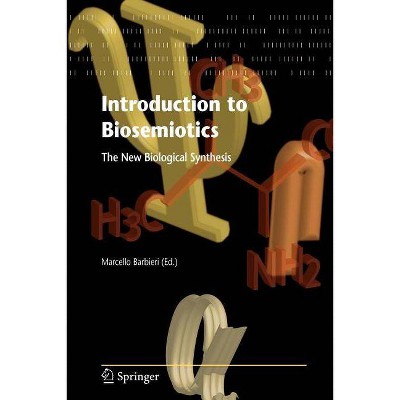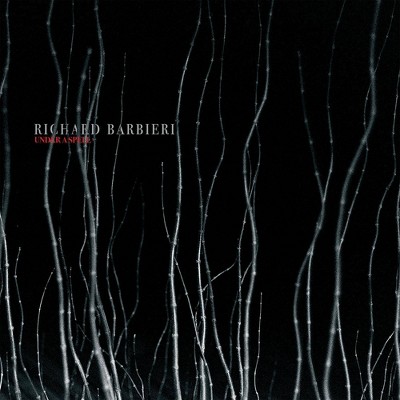Introduction to Biosemiotics - by Marcello Barbieri (Paperback)

Similar Products
Products of same category from the store
AllProduct info
<p/><br></br><p><b> About the Book </b></p></br></br><p>Combining approaches from biology, philosophy and linguistics, Biosemiotics proposes that animals, plants and single cells engage in semiosis: the conversion of objective signals into conventional signs. Here is a comprehensive introduction to the subject.</p><p/><br></br><p><b> Book Synopsis </b></p></br></br>Editorial: The challenge of biosemiotics; M. Barbieri.- Part 1: Historical points. 1. The evolutionary history of biosemiotics; D. Favareau.- 2. Semiosis in evolution; T. Jämsä.- 3. Has biosemiotics come of age? - and Postscript; M. Barbieri.- Part 2: Theoretical issues. 4. The necessity of biosemiotics: matter-symbol complementarity; H. Pattee.- 5. What is the scope of biosemiotics? Information in living systems; S. Salthe.- 6. Semiotic scaffolding of living systems; J. Hoffmeyer.- 7. Biosemiotics and biophysics - the fundamental approaches to the study of life; K. Kull.- 8. Is the cell a semiotic system?; M. Barbieri.- 9. Computing codes versus interpreting life; S. Artmann.- 10. Toward a Darwinian biosemiotics. Life as a mutual understanding; A. Markos et al.- 11. From the logic of science to the logic of the living. The relevance of Charles Peirce to biosemiotics; T. Vehkavaara.- 12. Towards a standard terminology for (bio)semiotics; M. Danesi.- 13. Information theory and error-correcting codes in genetics and biological evolution; G. Battail.- Part 3: Biosemiotic research. 14. RNA as code makers: a biosemiotic view of RNAi and cell immunity; M. Faria.- 15. Cellular semiotics and signal transduction; L.E. Bruni.- 16. Inner representations and signs in animals; S.P. Pain.- 17. A biosemiotic approach to epigenetics: constructivist aspects of oocyte-to-embryo transition; J. Huber, I. Schmid-Tannwald.- 18. Language and interspecific communicationexperiments: a case to reopen?; D. Martinelli.<p/><br></br><p><b> From the Back Cover </b></p></br></br><p>This book is addressed to students, researchers and academics who have barely heard of the emerging young science of Biosemiotics, and who want to know more about it. Written by many of the field's major contributors, it provides a highly qualified introduction to Biosemiotics and illustrates the most recent views in its background and development. </p> <p>Combining research approaches from biology, philosophy and linguistics, the field of Biosemiotics proposes that animals, plants and single cells all engage in semiosis - the conversion of objective signals into conventional signs. This has important implications and applications for issues ranging from natural selection to animal behavior and human psychology, leaving biosemiotics at the cutting edge of the research on the fundamentals of life. </p> <p></p> <p>Drawing on an international expertise, the book details the history and study of biosemiotics, and provides a state-of-the-art summary of the current work in this new field. And, with relevance to a wide range of disciplines - from linguistics and semiotics to evolutionary phenomena and the philosophy of biology - the book provides an important text for both students and established researchers, while marking a vital step in the evolution of a new biological paradigm.</p> <p></p> <p>Marcello Barbieri is University Professor of Embryology at the University of Ferrara, Italy, President of the Italian Association for Theoretical Biology and Editor-in-Chief of the Journal of Biosemiotics.</p><p/><br></br><p><b> Review Quotes </b></p></br></br><br><p>From the reviews: </p> <p>"Biosemiotics is the study of semiotic phenomena in animals, and eventually in all living creatures. ... Each chapter is self-contained; however, the editor has done a remarkable job of maintaining continuity and flow. ... Each contains its own extensive collection of references. The fine index will assist many readers in locating related material from the individually written chapters. Summing Up: Recommended. Graduate students and above." (J. Beidler, CHOICE, Vol. 44 (10), June, 2007)</p><br><p/><br></br><p><b> About the Author </b></p></br></br><p>MARCELLO BARBIERI is University professor of Embryology at the University of Ferrara, Italy. He has conducted research on embryonic development and ribosome crystallization at the Medical Research Council in Cambridge, UK, the National Institutes of Health in Bethesda, USA, and the Max-Planck-Institut für Molekulare Genetik in Berlin. </p> <p>He has published books on embryology and evolution, and has taught biophysics, molecular embryology and theoretical biology respectively at the Universities of Bologna, Sassari and Turin. His research interests include embryology, evolution and biosemiotics. </p> <p>He is president of the Italian Association for Theoretical Biology and Editor-in-Chief of the Journal of Biosemiotics. His major books include The Semantic Theory of Evolution (1985), Harwood Academic Publishers, New York, and The Organic Codes. An Introduction to Semantic Biology (2003), Cambridge University Press, Cambridge UK.</p> <p>Web page: www.cambridge.org/uk/catalogue/catalogue.asp?isbn=0521531004 </p> <p>Web site: http: //www.biologiateorica.it </p>
Price History
Price Archive shows prices from various stores, lets you see history and find the cheapest. There is no actual sale on the website. For all support, inquiry and suggestion messagescommunication@pricearchive.us




















